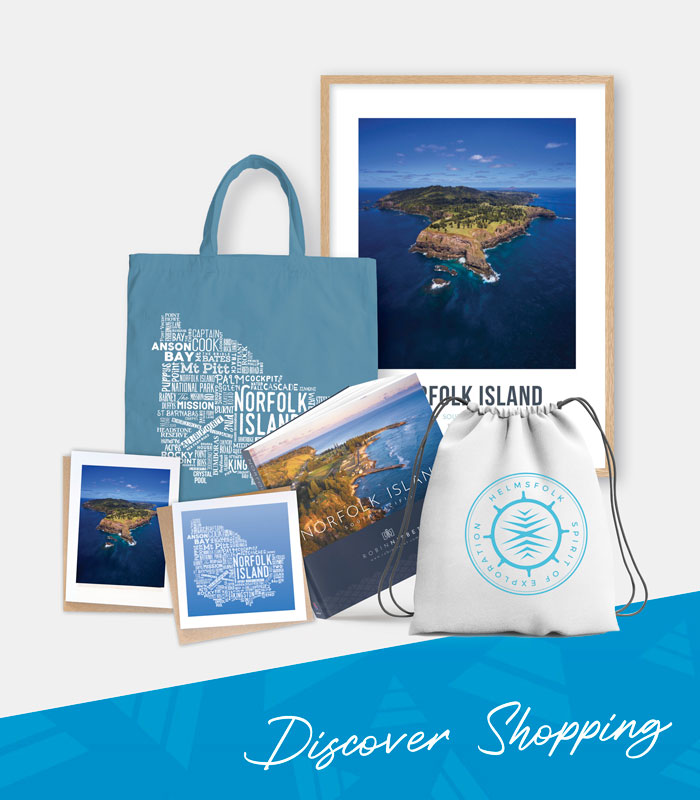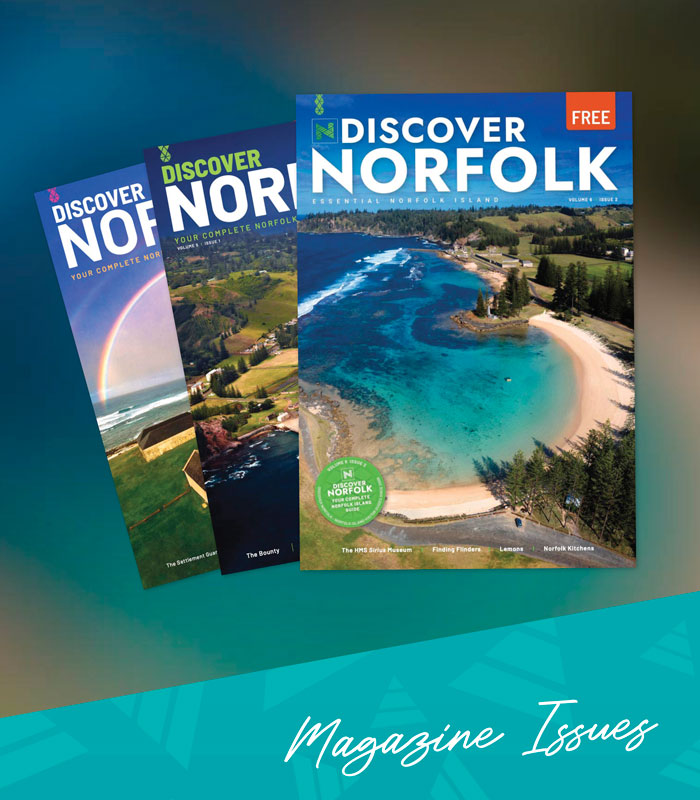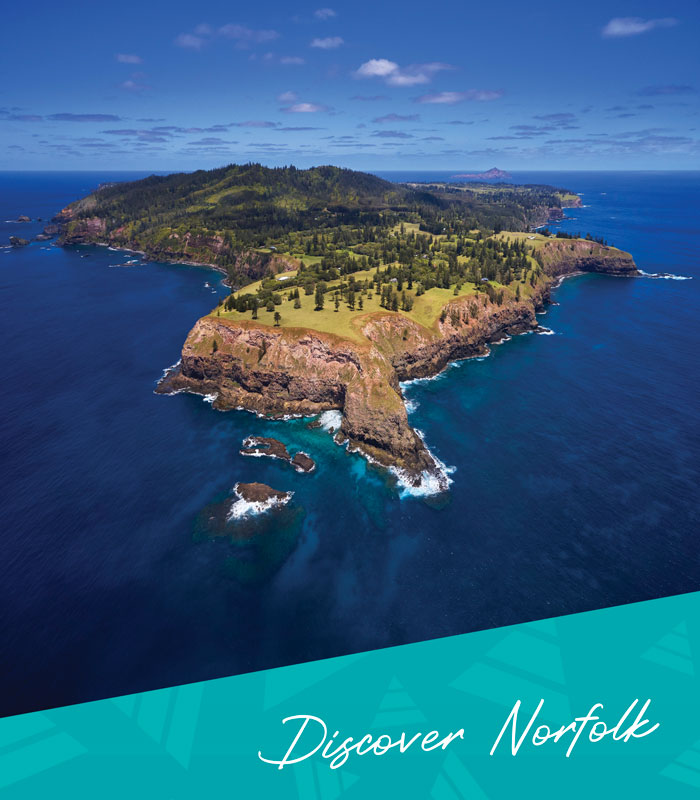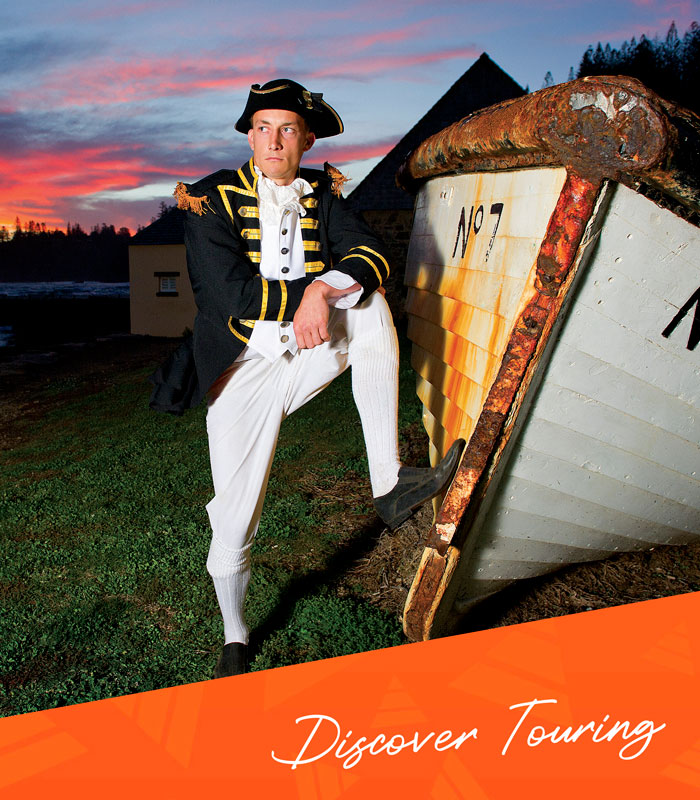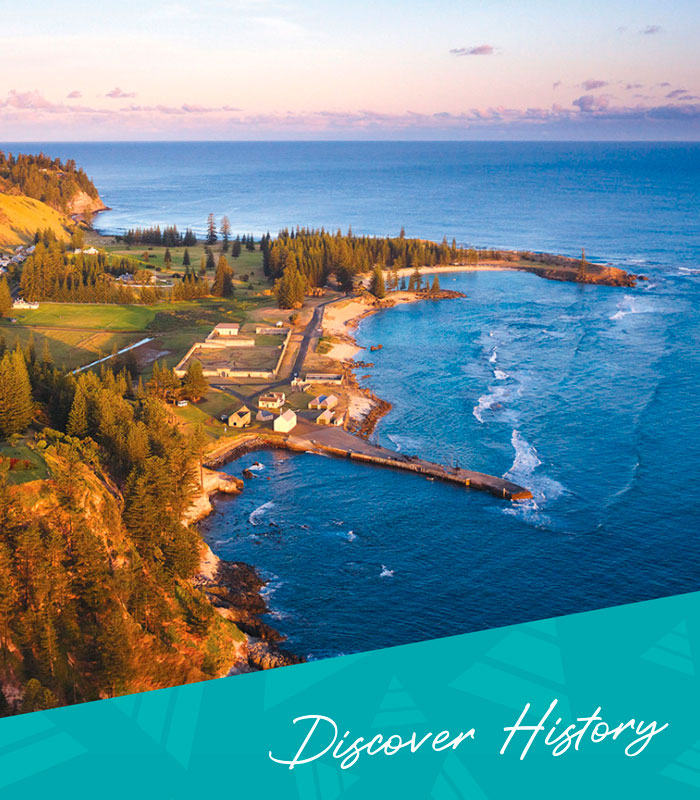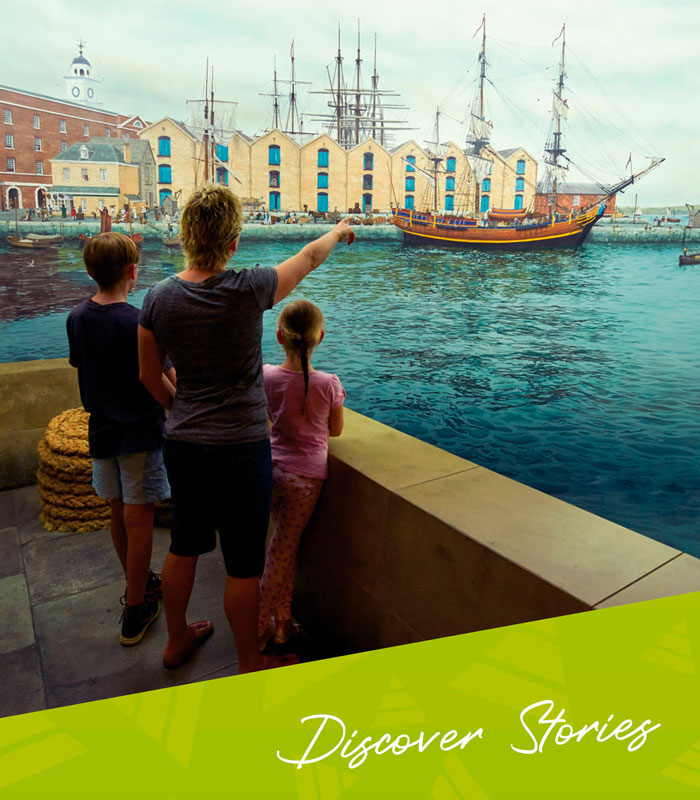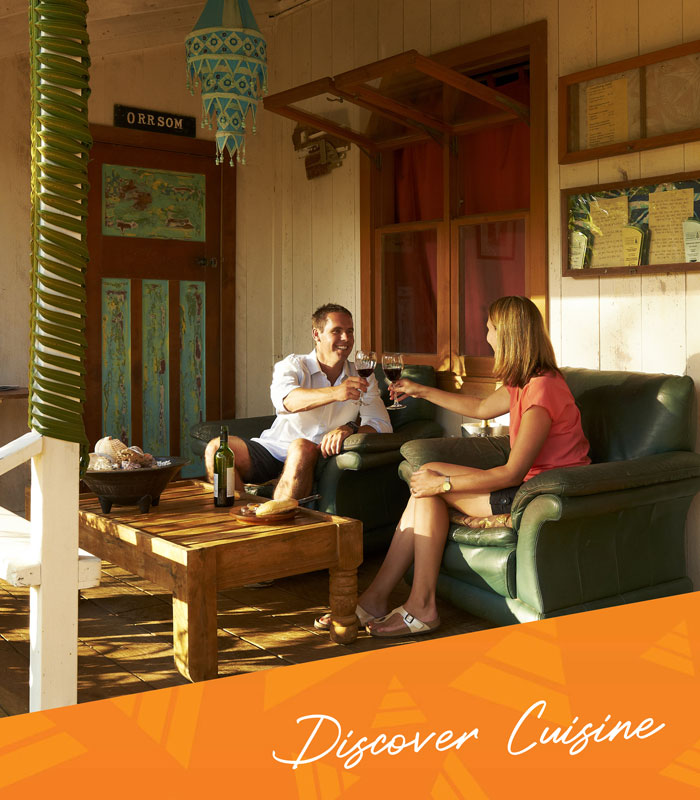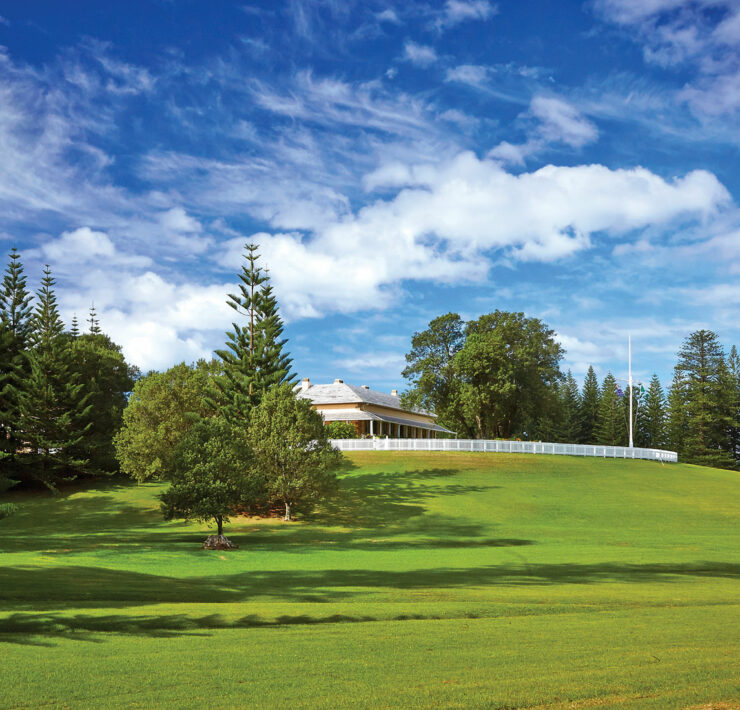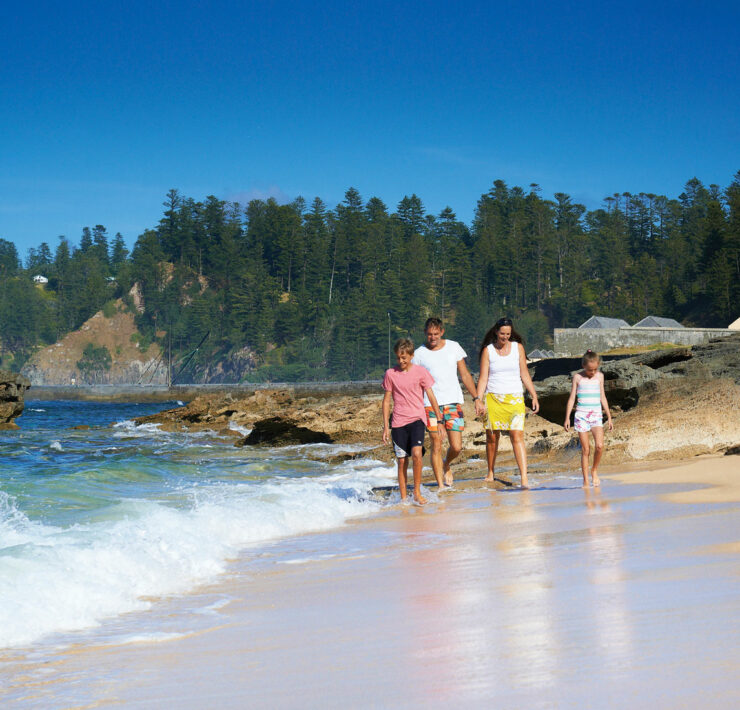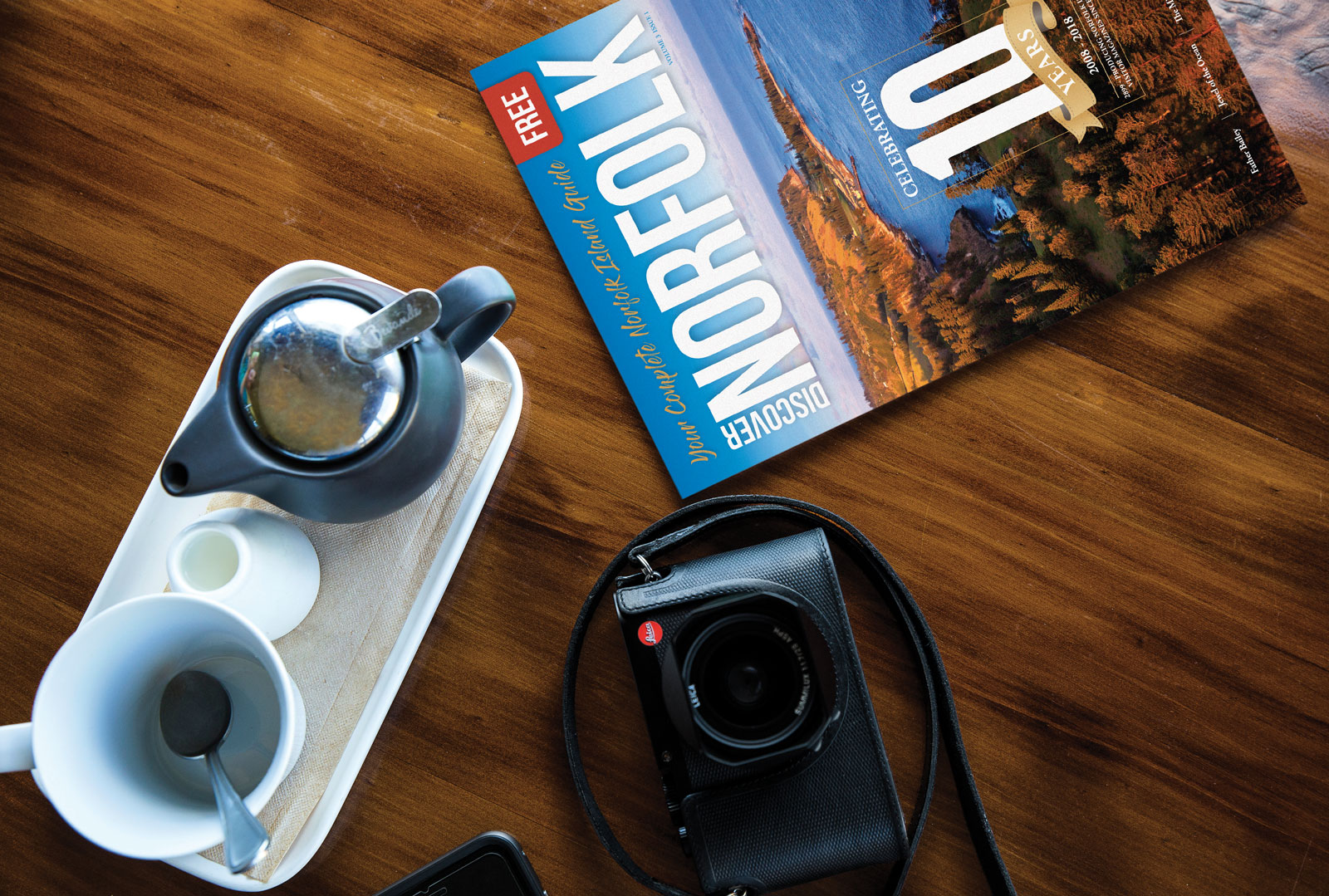Home » All Articles » The Bounty Cannon Project: A conservation story
The Bounty Cannon Project: A conservation story

How does a museum approach conservation of its most valued objects? The risk of damage occurring through handling and treatments can be high, yet the risk of doing nothing will almost certainly be higher – loss of the object itself. The answer for the Norfolk Island Museum when undertaking a conservation project on its Bounty Cannon was to start by making a replica – just in case!
The Bounty cannon is priceless. It is highly valued by islanders as a symbol of their unique ancestry. If only it could speak it would tell us about the drama of that day on 28 April 1789 when Fletcher Christian led a group of his fellow crew to mutiny; placing Captain Bligh and eighteen loyal others in a longboat and setting them adrift to what must have seemed certain death. It could also tell us about the mutineers’ desperate search for a hiding place that ended on Pitcairn Island and of their fate being sealed there after Matthew Quintal stole away and set fire to the Bounty. Such was the ferocity of the fire that she was completely burnt to the water line and the remains, including our cannon and another three on board, sunk to the bottom of the Bay.
The mutineers and the Tahitian women and men had more on their minds than recovering cannons from the surging waters in those early years on Pitcairn as they set about establishing houses, cultivating crops and raising children. In fact the cannons lay on the sea floor until 1845 when some of the men dived down and attached ropes to two of them. They passed the ropes to others on land, who then foot by foot slowly hauled them ashore. George Hunn Nobbs recorded the event:
“For fifty five years they had been deposited at the bottom of the sea on a bed of coral guiltless of blood… but on Saturday last but one, these guns resumed its original vocation; at least the innoxious portion of it, to wit, belching forth fire and smoke, and causing the island to reverberate with its bellowing: the other gun is condemned to silence having been spiked by someone of the Bounty’s crew”.
The cannons are four pounder standard design British naval guns, common in the reign of George III and were put onto the Bounty when she was refitted in 1787 prior to sailing for Tahiti to collect breadfruit. They were actually only used once – and that was after the mutiny had occurred and the mutineers were trying to settle on Tubuai but met resistance from the locals. The Bounty’s Boatswain James Morrison recorded that the mutineers, “fired a four-pounder shotted among them at which they fled. The shot did no other damage then passing through a house where it cut away a rafter to which a man was hanging a gourd of water, and at which he was so terrified that he left the house.”
The cannon fired in 1845 was often fired to salute visiting ships. However on Wednesday 26th January 1853 as they were trying to salute the H.M.S. Virago, it misfired. The Island Magistrate Matthew McCoy was injured and sadly died 12 hours later. That cannon was then spiked and later given to a ship heading for America. Its whereabouts today are unknown. The other cannon is our cannon, and it was brought to Norfolk when the Pitcairner’s moved here in 1856.
On Norfolk it stood for many years outside the Military Hospital in Kingston. In the mid 1970s it was included in conservation work carried out by Western Australian Maritime Museum personnel and travelled to Perth for treatment. On its return it was included in the newly established Maritime Museum when opened in 1988.
However by 2006 the cannon urgently needed further treatment as it was showing signs of corrosion activity beneath its surface coating. To treat it the entire surface coating had to be removed. In addition, there was significant corrosion and delamination of the uncoated bore. A successful application to the Community Heritage Grants Program through the National Library of Australia meant that in mid 2010 conservation of the Bounty cannon could at last occur.
It was decided that prior to beginning the conservation work a replica would be made. A replica can never replace the original, but it would provide an exact copy to begin reconstruction should any catastrophic incident occur during treatment. In fact, one other of the Bounty’s cannons had had a replica made for exactly the same reason. This cannon lay under the sea until 1999 when it was recovered, sent to the Museum of Tropical Queensland for conservation and returned to Pitcairn in 2009. Today it takes pride of place in the Pitcairn Island Museum. The final, or fourth cannon had previously been brought to the surface in 1973 and today sits outside a private home in Adamstown on Pitcairn.
Mould and cast making is a specialist skill, so the project included bringing to the island Phillip Smith, an Exhibitions Officer with the Museum of Tropical Queensland who had also made the replica for the ‘other’ Bounty cannon. There is of course a wonderful irony to Philip working on the Bounty’s cannons as he usually works with the Pandora collection. Wrecked off the far north Queensland coast, the Pandora was the ship sent to find the Bounty mutineers and bring them to justice. The story of her wrecking after capturing eight of the mutineers that elected to stay in Tahiti is a tale of death and disaster. Thirty-four men drowned including four of the mutineers who were being kept in specially built wooden boxes, 3.3×5.4 metres, one of whom could not escape his box as the ship went down.
Local Administration employee Lee Hamilton-Irvine worked alongside Phillip. This provided not only a great opportunity for Lee to learn the craft of mould and cast making but also for his skills to be used in making a cradle and lifting system to easily enable the 500 pound cannon to be turned and handled. After two weeks Phillip and Lee had made a replica cannon that was embarrassingly difficult to tell from the original.
Museum Conservation Officer Janelle Blucher led the conservation project. Working with objects as old as the cannon, it is impossible to know the extent of damage that may lie below the surface or how stable the material is. What may at first appear to be a straight forward job on a robust metal object, can rapidly move to becoming a more complex proposition once the job has begun. Conservation work is usually detailed, hardly ever straight forward and requires a process of determining an action, gently seeing how it goes and moving on one step at a time. And with this project, this is exactly what occurred.
With the help of volunteer Sue Brian, Janelle painstakingly moved back and forth over the entire surface of the cannon stripping the hard outer layers that had been applied in the 1970s. This included chemical and gentle mechanical methods, but mostly a lot of minute handwork to ensure every microscopic bit of the old sealant had been removed. This was then followed by more finely detailed work as they gently removed the surface corrosion. Treating the inside of the bore required strong lighting, some awkward working angles and an ingenious lifting mechanism developed by Lee. As they worked, good news emerged that the extent of corrosion was not as deep as originally thought and could be removed by hand, which meant the cannon did not have to be submerged in an caustic bath. Roughly a month after beginning their work Janelle and Sue had the cannon ready to be put back on display.
On seeing the cannon safely returned Janelle said, “It was an honour to have the opportunity to work on an object of such significance not only professionally, as it would be the envy of many conservators, but also as a Bounty descendant”.
The final resting place for the cannon is in a carriage made by local Peter Horrocks from original plans provided by the Australian National Maritime Museum. Peter used specially sourced blocks of Norfolk Island timber to hand fashion the carriage, which is a beautiful object in its own right and allows the cannon to be seen in the same way that it would have been on the Bounty in 1789.
The successful completion of this project with funding from the National Library of Australia is a testament to the skill of local islanders and newly forged friendships with the Museum of Tropical Queensland and Phillip Smith. The Bountycannon sitting in its hand made carriage, is now on display in the Pier Store museum and thanks to this conservation project it will continue be here as a dearly loved object for future generations of Bounty descendants to come.
____
Image Credit: The Bounty Cannon, Norfolk Island – Robin Nisbet
www.robinnisbet.com
____
Article content disclaimer: Article first published in YourWorld, Volume 01 Issue 04, 2011. Please note that details of specific travel, accommodation and touring options may be outdated. References to people, places and businesses, including operating days and times may be have changed. References to Government structure and Government businesses/entities may no longer be applicable. Please check directly with businesses and/or Government websites directly rather than relying on any information contained in this article before you make travel arrangements.


